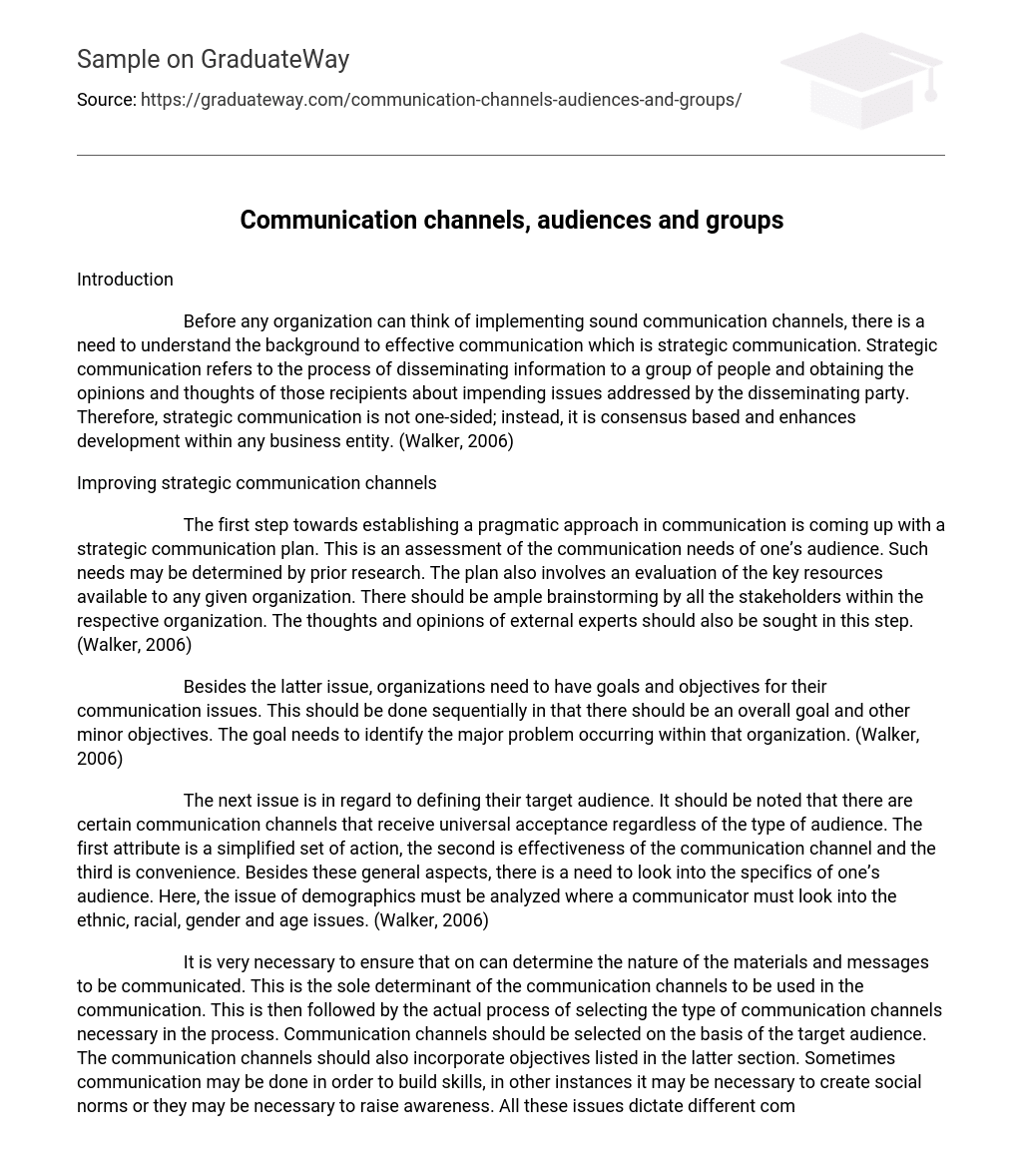Introduction.
Before any organization can implement sound communication channels, it is essential to understand the background of effective communication, which is strategic communication. Strategic communication involves disseminating information to a group of people and obtaining their opinions and thoughts on impending issues addressed by the disseminating party. Therefore, strategic communication is not one-sided; instead, it is consensus-based and enhances development within any business entity (Walker, 2006).
Improving strategic communication channels.
The first step towards establishing a pragmatic approach in communication is to come up with a strategic communication plan. This involves assessing the communication needs of one’s audience, which can be determined through prior research. The plan also requires evaluating the key resources available to the organization. All stakeholders within the organization should participate in ample brainstorming, and external experts’ thoughts and opinions should also be sought at this stage (Walker, 2006).
Besides the aforementioned issue, organizations must establish goals and objectives for their communication. This should be done sequentially, starting with an overall goal and followed by minor objectives. The goal should identify the major problem occurring within the organization (Walker, 2006).
The next issue to consider is defining the target audience. It should be noted that certain communication channels receive universal acceptance, regardless of the type of audience. The first attribute is a simplified set of actions, followed by the effectiveness of the communication channel and convenience. In addition to these general aspects, there is a need to examine the specifics of one’s audience. This requires analyzing demographics such as ethnicity, race, gender, and age. (Walker, 2006)
It is necessary to ensure that one can determine the nature of the materials and messages to be communicated. This is the sole determinant of the communication channels to be used. The actual process of selecting the type of communication channels necessary in the process follows this. Communication channels should be selected based on the target audience, as well as incorporating objectives listed in a latter section. Communication may sometimes aim at building skills, creating social norms or raising awareness; all these issues dictate different communication channels.
It is necessary to ask oneself whether a newspaper or a television screen would convince one’s target audience because different groups have different appeals. Budgetary constraints largely determine communication channels; some such as brochures may be more affordable than placing a story in a national newspaper for particular companies.
The best communication channel frequently exposed to one’s target audience would be ideal. A pragmatic approach involves selecting a communication channel that would expose one’s message several times and considering using various other communication channels solidifies chances of reaching one’s target audience, consequently effecting change within an organization (Walker, 2006).
Conclusions.
Choosing the right communication channels is a holistic process that begins with selecting the appropriate communication objectives. This is followed by conducting a thorough audience analysis, which should take into account demographic issues in the communication strategy. After that, the process of selecting channels commences and it should adhere to all the audience and objective goals set out in the previous section of the communication strategy (Walker, 2006).
Reference:
Robyn Walker (2006): Strategic Business Communication: An Integrated, Ethical Approach; published by South-Western College Publishers.





